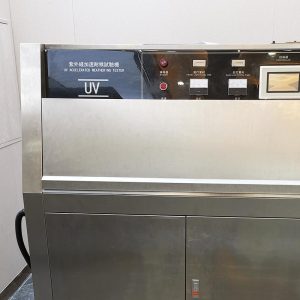The application of UV weather resistance test chamber in sunscreen hat test
Uv weather resistance test chamber plays an important role in the application of sunscreen hats. As an outdoor product, sunscreen hats are often exposed to sunlight, and long-term UV irradiation will have an impact on their materials, such as color fading, material aging, strength reduction and so on. The UV aging test chamber can simulate the real UV radiation environment to evaluate the weather resistance and durability of the sunscreen cap.
In the UV aging test of sunscreen hats, the UV aging test chamber is usually used in the following aspects:
Evaluate color retention: The color stability of a sunscreen cap is an important indicator of its appearance quality. Through the UV aging test box, it can simulate the UV radiation under the sun, observe and evaluate the color retention of the sunscreen cap, and judge its fade resistance performance.
Durability assessment: The durability of sunscreen hats is crucial to their service life. Uv aging test chamber can simulate long time UV radiation exposure, evaluate the aging degree of sunscreen cap material, strength loss, judge its durability.
The application of UV weather resistance test chamber in sunscreen hat test
Material performance test: sunscreen hat material requirements have a certain degree of softness, tensile resistance and wear resistance and other properties. Uv aging test chambers can evaluate changes in physical properties of sunscreen cap materials, such as tensile strength, elongation at break, and wear resistance.

Method of test
Use UV aging test chamber to test the aging resistance of sunscreen cap, generally can be carried out according to the following steps:
Sample preparation: Select the sunscreen cap sample that meets the requirements and ensure that the size and material of the sample are consistent with the actual product.
Set test conditions: according to the test requirements or applicable standards, set the UV radiation intensity, temperature, humidity and other test conditions.
Sample placement: Place the sample of the sunscreen cap on the sample table in the UV aging test chamber to ensure that the sample is exposed to the light source of UV radiation.
The application of UV weather resistance test chamber in sunscreen hat test
Run test: Allow the sample to be continuously exposed to UV radiation and other test conditions for a certain period of time according to the set test conditions.
Observation and evaluation: Regularly observe and evaluate the changes of samples, including color changes, surface conditions, material properties changes, etc., and record and record relevant data.
Analysis of results: The aging resistance and expected life of the sunscreen cap were evaluated based on the sample changes and performance losses observed during the test.
The application of UV weather resistance test chamber in sunscreen hat test
Industry standards
Commonly used industry standards and guidelines for UV aging testing of sunscreen hats include:
ASTM D4329: Standard Test Method for outdoor UV Radiation aging of plastic materials and coatings.
ISO 4892-3: This standard specifies methods and procedures for UV radiation aging testing of plastic materials under laboratory conditions and is applicable to the testing of sunscreen hats.
Specific application cases
Sports sunscreen cap: Sports sunscreen cap is often exposed to outdoor environment, UV aging test can evaluate its weather resistance and color stability.
Casual sunscreen hats: Casual sunscreen hats are often exposed to UV radiation in daily use, and UV aging tests can evaluate their durability and appearance quality.
Children’s sunscreen caps: For children’s sunscreen caps, UV aging tests can evaluate the durability and safety properties of their materials.
Tip: Specific application cases and applicable standards may vary depending on the type, material and target market of sunscreen hats. When performing UV aging tests, it is recommended to refer to applicable industry standards and relevant guidelines to ensure the accuracy and reliability of the tests.
